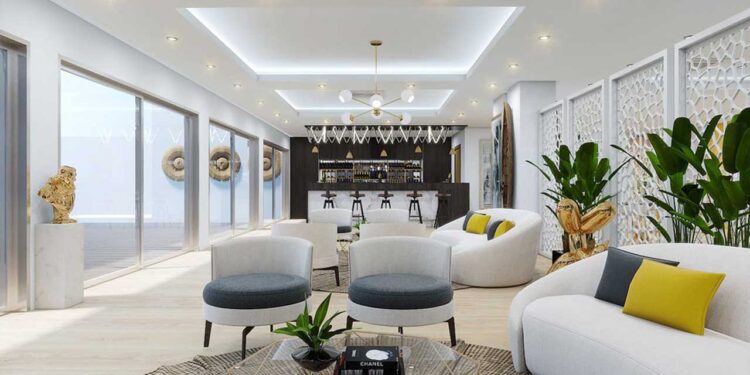Introduction
Interior design is the art of enhancing the interior of a space to create a more aesthetically pleasing and functional environment. Whether you’re renovating your home or starting from scratch, the process can seem daunting. However, by breaking it down into manageable steps, you can bring your ideas to life with ease and confidence.
Define Your Vision
The first step in any interior design project is to define your vision. Take some time to think about the atmosphere you want to create in your space. Consider your personal style, preferences, and how you plan to use the space. Do you want it to be cozy and inviting, or modern and minimalist? Understanding your vision will serve as a guide throughout the design process.
Set a Budget for Interior design
Once you have a clear vision in mind, it’s essential to set a budget for your project. Determine how much you’re willing to spend on materials, furnishings, and labor. Be realistic about your financial limitations and prioritize your expenses accordingly. Remember that creativity and resourcefulness can go a long way in achieving your desired look without breaking the bank.

Gather Inspiration
Inspiration can come from various sources, including interior design magazines, websites, social media platforms, and even nature. Create a mood board or Pinterest board to collect images, colors, textures, and patterns that resonate with your vision. Use these inspirations to inform your design decisions and keep you focused as you move forward.
Assess the Space
Before diving into the design process, take the time to assess the space you’ll be working with. Consider the layout, dimensions, architectural features, and existing furnishings. Identify any structural or functional issues that need to be addressed, such as poor lighting, awkward room flow, or lack of storage. Understanding the space’s constraints and potentials will help you develop a more effective design plan.
Develop a Floor Plan
A well-thought-out floor plan is the foundation of any successful interior design project. Begin by measuring the dimensions of the space and sketching a rough layout. Consider how you want to arrange furniture, create traffic flow, and optimize functionality. Experiment with different furniture placements until you find the most suitable arrangement for your needs.
Choose a Color Scheme
Color plays a crucial role in setting the mood and atmosphere of a room. Choose a color scheme that reflects your vision and complements the existing elements in the space. Consider factors such as natural light, room size, and the overall ambiance you want to create. Experiment with paint swatches and fabric samples to find the perfect combination of hues for your design.
Select Furniture and Furnishings
Once you have a solid foundation in place, it’s time to select furniture and furnishings that bring your vision to life. Consider the scale, style, and functionality of each piece in relation to the space and your design goals. Look for versatile pieces that offer both comfort and aesthetics. Don’t be afraid to mix and match different styles and materials to add depth and character to your design.
Add Personal Touches
Personal touches are what make a space truly feel like home. Incorporate meaningful objects, artwork, and accessories that reflect your personality and interests. Display family photos, souvenirs from travels, or heirloom pieces that tell a story and evoke fond memories. These personal touches will add warmth and personality to your design and make the space feel uniquely yours.
Focus on Lighting and Ambiance
Lighting is a crucial element in interior design that often gets overlooked. Consider the natural light levels in the space and supplement with ambient, task, and accent lighting as needed. Choose fixtures that complement your design style and enhance the ambiance of the room. Experiment with different lighting arrangements to create layers of light that add depth and dimension to your design.
Review and Revise
Once you’ve completed your design plan, take a step back and review it with fresh eyes. Assess the overall coherence, functionality, and aesthetics of the space. Make any necessary revisions or adjustments to ensure that your design meets your vision and goals. Don’t be afraid to seek feedback from friends, family, or a professional designer to gain valuable insights and perspectives.
Conclusion
Bringing your interior design ideas to life is a rewarding and fulfilling process that requires careful planning, creativity, and attention to detail. By following these step-by-step guidelines, you can navigate the complexities of interior design with confidence and achieve a space that reflects your unique style and personality. Remember to stay flexible, open-minded, and true to your vision throughout the journey. With patience and perseverance, you can create a home that truly inspires and delights.








Thank you for your message! It seems like you’re referring to the repetitive nature of the comments provided earlier. If you have any specific questions, topics, or concerns you’d like to discuss, please feel free to share them. Whether it’s about technology, science, literature, or any other subject, I’m here to assist you. Just let me know how I can help you further!